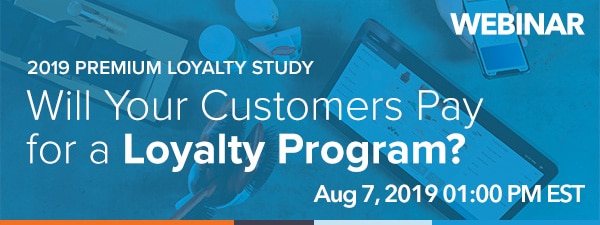There’s no doubt that loyalty is harder than ever. With so many buying options out there, it’s hard to build deep relationships with consumers. If you’re a retailer, you’ve felt this. Even customers agree.
By Paul Wolfer
But when you can build loyalty, it’s extremely powerful. Ever hear of the 80/20 rule? In retail, it means that 80 percent of your sales come from 20 percent of your customers – Your most loyal fan base. So, what have successful brands realized about building stronger relationships with their best customers?
Loyalty is About Quality Over Quantity
Traditional loyalty programs were all about the brand. That meant getting as many people to sign up as possible (the 80 percent). And with little barrier to entry, there isn’t much in the way of getting lots of sign ups. It’s typically an email address in exchange for a discount or coupon. But what happens next?
These customers end up joining lots of loyalty programs at lots of similar brands. These casual customers become loyal to the discounts themselves and not the brands. In fact, 52 percent of millennials said they’d switch from one major retailer to another for discounts of 15 percent or more. Yet Prime members spend more than double that of non-members annually. And they represent 63 percent of Amazon’s U.S. customers.
Thirty-nine percent of Starbucks’ U.S. sales come from Starbucks Rewards members. Starbucks CFO Scott Maw has stated nearly all the company’s growth in same-store sales can be attributed to customers that have a digital relationship with the company and those that are in the Starbucks Rewards program.

The program is easy to use, makes ordering and pickup more convenient, engaging, and integrates well with other platforms and services. The points are nice, but like Amazon Prime, Starbucks Rewards has really become an integral part of peoples’ daily lives.
Brands are realizing that instead of trying to get sales wherever possible, it pays to really focus on providing your loyal customers with a better experience.
If brands really want to increase loyalty with their best customers, the top 20 percent, it takes more than a one-size-fits-all loyalty program.
Brand Loyalty Requires Brand Authenticity
Being able to really offer a unique program experience that your customers can’t get anywhere else requires some soul searching. When programs feel similar, it’s easy to switch brands. But when a program is unique and valuable, it’s much harder to leave.
To offer that, brands must figure out their own unique values and then find customers who share in those. Some brands like Nike are really drawing the line here. They’re saying, “Here’s where we stand. Are you with us?” While not all brands are getting involved in brand activism, there are other ways to show your best customers what you believe as a brand.
Here is just a part of Patagonia’s mission statement:
“We know that our business activity—from lighting stores to dyeing shirts—is part of the problem. We work steadily to change our business practices and share what we’ve learned. But we recognize that this is not enough. We seek not only to do less harm, but more good.”
Patagonia lives and breathes that mission statement by investing in renewable energy, incenting its employees to carpool, donates a percentage of sales to grassroots environmental agencies, actively campaigns for environmental causes, and more.
Blake Mycoskie, the founder of Tom’s shoes, started the company because he met children in Argentina who didn’t have proper footwear. To this day, the company still runs One for One – each pair of shoes purchased equals one pair of shoes given to children in need.
What do all these brands have in common? They’re all being authentic. The old saying goes, “When you try to be everything to everyone, you’re nothing to no one”. Not all people care about the same things.
Consumers all have their own their own values and beliefs. When you can find the people whose values align with yours as a brand, that’s a powerful connection.
Offer Your Community a Premium Experience
While these deep connections are built from authenticity, premium loyalty programs can enhance that even more. Rather than using loyalty as a promotion, the brands focusing on premium loyalty are focused on using these programs to build deeper connections and more overall engagement.
Lululemon is a great example. While the athletic apparel brand doesn’t have a set mission statement, it instead outwardly displays a living, breathing manifesto around well-being. It’s products, stores, loyalty program and overall customer experience supports it.
While its new pilot premium loyalty program has some of the transactional elements of a traditional program like free shipping and free products, it goes much deeper. The rewards also include events, workout classes and well-being experiences that are authentic to the Lululemon brand. Again, it all goes back to becoming part of peoples’ daily lives. Like all the brands mentioned above, Lululemon loyalty are like part of a community of like-minded individuals.
While those traditional loyalty programs still have their place, the best of your brand should be for your best customers – your community.
Stop Focusing on Everyone and Focus on Your People
Loyalty is extremely difficult in the Age of the Customer. With so many options and so many similar loyalty programs out there, it takes more than ever to build loyalty with your customers. Traditional loyalty programs still have their place, but really focus in on your best customers. Get them to love you.
It’s not about trying to please every single person. It’s about being authentic and finding your community. What are you doing to show your best customers that you’re with them?




